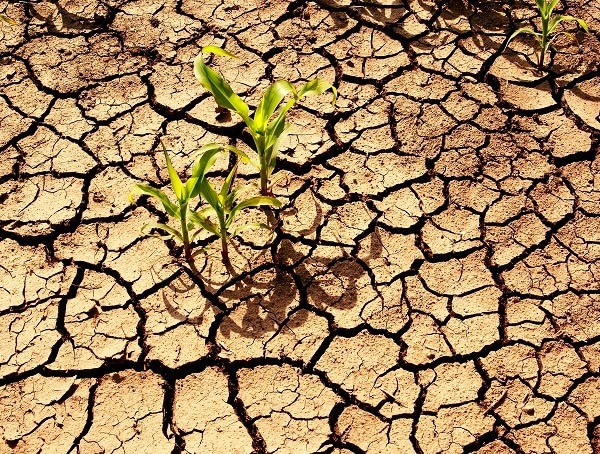Droughts, one of the variables that impact plant physiology, are becoming more severe in all plant ecosystems worldwide because of climate change. Although new tools for detecting and assessing drought stress in plants have been developed—transcriptomic or metabolomic technologies, for example—they are still hard to apply in natural ecosystems, particularly in remote areas and developing countries.
 The study aims to establish effective and low-cost protocols to easily detect and study how droughts affect plants. Image Credit: University of Barcelona.
The study aims to establish effective and low-cost protocols to easily detect and study how droughts affect plants. Image Credit: University of Barcelona.
A new study published in the journal Trends in Plant Science describes techniques that allow investigators to identify and track drought stress in plants in a low-cost, easy-to-use manner. Sergi Munné-Bosch and Sabina Villadangos from the Faculty of Biology and the Institute for Research on Biodiversity (IRBio) at the University of Barcelona are the study’s authors.
Fighting the Impact of Drought on Plants
Strategies for detecting and monitoring the impacts of drought in plants range from very simple and low-cost initiatives (growth or relative water content analysis) to more expensive and complex approaches (omics technologies).
Sergi Munné-Bosch, Professor in the Department of Evolutionary Biology, Ecology, and Environmental Sciences at UB, explains how these cutting-edge technologies, “have provided new opportunities to detect and monitor drought stress, but their cost generates inequalities around the world.”
Unfortunately today the whole world is affected by the lack of water resources, especially in the context of the current climate change we are experiencing. And, unfortunately, countries with fewer economic resources are no exception. It should be borne in mind that most of the poorest countries are in Africa, which is also home to the world's largest arid and sub-arid regions.
Sergi Munné-Bosch, Professor, Department of Evolutionary Biology, Ecology, and Environmental Sciences, University of Barcelona
Laboratories with Basic Equipment
The study was designed to address the need for effective and low-cost protocols for detecting and studying how droughts affect plants. The authors present a set of simple techniques that can be used with common laboratory equipment, including a microscope, precision balance, spectrophotometer, centrifuge, oven, camera, and computer.
Employing the tetrazolium test, an organic heterocyclic compound that has conventionally been used in plant physiology studies, these laboratories could analyze the various parameters on growth rates, leaf water content, pigments, and leaf viability.
With these indicators, we can get a complete picture of which species are best adapted to a particular climate, or how a given crop responds to changing conditions in a given region in the current context of climate change. All these measures are easy to conduct. In addition, a specialized team can be assembled in a very short time to develop measures quickly and efficiently. And they can be implemented at a very low cost, so they are viable approaches worldwide.
Sergi Munné-Bosch, Professor, Department of Evolutionary Biology, Ecology, and Environmental Sciences, University of Barcelona
The Tetrazolium Test: Getting a Classic Back
In a second study (Trends in Plant Science, 2023), the investigators highlighted the tetrazolium test as a useful and simple method for assessing the effects of drought stress on plants.
“This test not only allows us to detect whether a cell, tissue, or organ is alive or dead, but it is also an excellent indicator of its longevity; in other words, it is a scientific tool that allows us to predict how long a plant will live. This can be especially useful for biodiversity management and conservation programs, especially in the current context of climate change,” noted the researcher.
The effects of climate change are intensifying research into how plants adapt to new environmental conditions.
More than a stimulus, this is a necessity. Humans need to adapt to climate change, and they will always do so better hand in hand with nature, integrating with it. And to do so, it is essential to know the ecosystems and all the organisms that form part of them, including plants.
Sergi Munné-Bosch, Professor, Department of Evolutionary Biology, Ecology, and Environmental Sciences, University of Barcelona
Creating and implementing high-quality scientific tools is essential for developing management plans and conserving biodiversity worldwide.
“This study contributes to a better understanding of the plants’ response to drought in a context of climate change, and, in addition, it can be useful for biodiversity management programs,” adds UB researcher Sabina Villadangos.
The research also makes it easier to enforce these measures globally. “It is necessary to bear in mind that if all countries do not coordinate in the face of foreseeable changes, the effects of global change will be devastating,” concluded Sergi Munné-Bosch.
Journal Reference:
Munné-Bosch, S., et al. (2023) Cheap, cost-effective, and quick stress biomarkers for drought stress detection and monitoring in plants. Trends in Plant Science. doi.org/10.1016/j.tplants.2023.01.004.